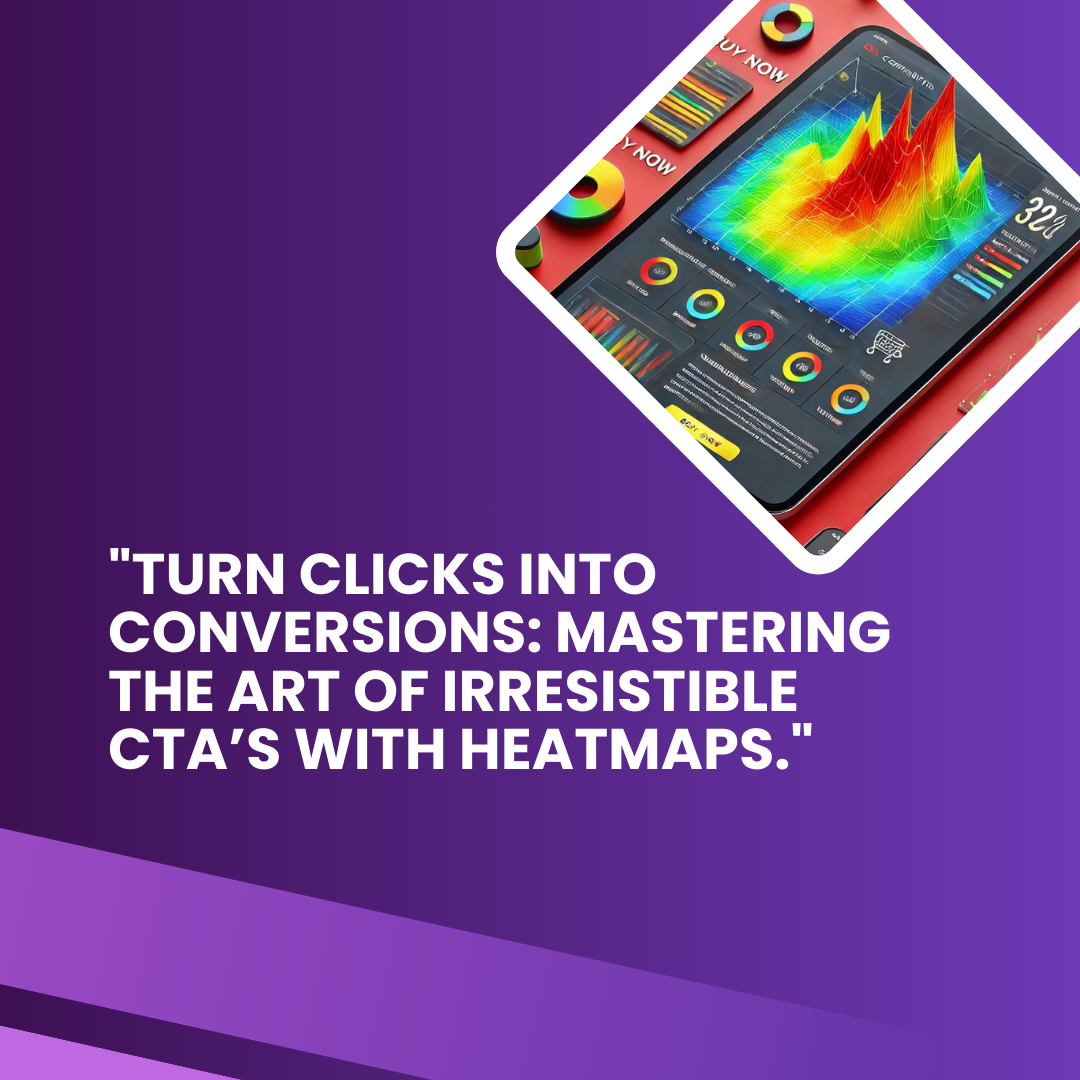
Are Your Call-to-Actions (CTAs) Driving the Conversions You Want?
As an e-commerce founder, you already know the importance of having strong, visible CTAs. Buttons like “Add to Cart,” “Buy Now,” and “Get the Deal” aren’t just design elements—they’re the direct line to your business’s bottom line. But what happens when those CTAs aren’t getting the attention they deserve?
If your CTAs are buried below the fold, blend too much into the design, or are surrounded by distractions, the result is lost conversions, frustrated customers, and ultimately, missed revenue opportunities.
In this post, we’re diving into the ways you can ensure your CTAs are optimized for maximum impact, with a special focus on heatmaps. If you’ve ever wondered:
- Are my CTAs in the right spot?
- Are they grabbing users’ attention, or are they being ignored?
- How can I make them more irresistible to click?
Then you’re in the right place. Let’s dig deeper into optimizing your CTAs, using heatmaps, and ensuring your business is making every click count.
Why CTAs Are a Dealbreaker for E-Commerce
Your CTAs are the most important touchpoint between the customer and their decision to purchase. Yet, many e-commerce brands make the mistake of neglecting their placement, design, or relevance. This can be detrimental, especially when you consider this statistic: 70% of users never scroll past the first screen on a webpage. If your CTA is placed too low or blended into the background, you might as well be asking users to abandon their cart without ever getting a chance to buy.
Here’s the good news: heatmaps can help you solve this problem by showing you exactly where users are engaging with your site—and more importantly, where they’re not. By understanding user behaviour, you can move your CTAs into prime spots and make them stand out.
Heatmaps: The Secret Weapon for E-Commerce CTA Optimization
Heatmaps aren’t just a fancy tool; they’re a game-changer for e-commerce businesses that want to understand exactly how users are interacting with their website. Here’s how heatmaps can help you fix common CTA issues and drive conversions:
1. Pinpoint Visibility Issues
Heatmaps show where users are clicking, scrolling, and even where they’re losing interest. For instance, if your “Add to Cart” button is buried below the fold or hidden behind images and text, you’ll immediately see this in the heatmap. A common issue we see in many e-commerce sites is that customers stop scrolling just before they reach the CTA—leaving it essentially invisible to the user.
Actionable Tip: Use heatmaps to identify where users stop scrolling. If your CTA is below the fold, try moving it higher up on the page, ideally above the fold. Make sure it’s in a natural flow with the content but not hidden or overshadowed by other design elements.
2. Optimize Mobile Experiences
With mobile shopping on the rise, optimizing for mobile users is essential. Heatmaps show whether your CTAs are “thumb-friendly” (easy for users to tap on their mobile devices) or if users are struggling to find them.
Actionable Tip: Use heatmaps to track mobile behaviour and adjust CTA placement. Ensure they’re easily tappable without users having to zoom in. A good rule of thumb: CTAs should be within reach of the user’s thumb without too much effort. Experiment with size and placement to find the perfect balance.
3. A/B Test Smarter
Not sure whether your “Buy Now” button should be red or green? Heatmaps paired with A/B testing are powerful tools for determining the best-performing colors, placements, and texts. Heatmaps show you where users are clicking, but A/B tests reveal the emotional and psychological factors behind those clicks.
Actionable Tip: Try A/B testing different versions of your CTA. Test color schemes, size, and placement, and analyze which combination produces the highest click-through rate (CTR). Heatmaps will help you visualize the data and guide your decisions.
4. Reduce Decision Friction
Customers hesitate to click for a variety of reasons—maybe they’re unsure of the value proposition, confused by unclear wording, or distracted by other site elements. Heatmaps combined with session replays can help you see why users aren’t converting.
Actionable Tip: Use heatmaps to find friction points and combine them with session replays to understand why users are hesitating. Is it unclear wording on the CTA? Are there too many competing distractions on the page? Once you identify the issue, make quick changes to reduce friction.
How to Use Heatmaps to Fix Your CTAs
- Start with Your High-Traffic Pages: Focus on analyzing pages that bring in the most traffic, like product pages, category pages, and checkout pages. These are the areas where your CTAs need to perform the best.
- Identify Drop-Off Points: Heatmaps will show you where users are dropping off before reaching your CTA. Use this information to move your CTA to a higher, more visible position.
- Experiment with Placement, Design, and Text: Optimize your CTAs by adjusting their placement, size, color, and the language you use.
- Pair Heatmaps with Session Replays: Heatmaps show you what’s happening, but session replays show you why.
- Track Performance After Changes: Once you make adjustments based on heatmap data, revisit your heatmaps to track whether your changes led to better engagement and conversions.
Final Thoughts: Make Your CTAs Work for You
At the end of the day, CTAs are where the magic happens for e-commerce businesses. Heatmaps provide the clarity you need to optimize your CTAs for maximum impact—whether that’s by moving them to a more visible location, tweaking their design, or making them more compelling to users.
If you’re ready to stop guessing and start optimizing, Behaviour Code can help. With our heatmaps, session replays, and path analytics, you can make informed decisions about your CTAs and improve your conversions with data-backed insights.
Popular Blogs

The Secret to Turning First-Time Shoppers into Repeat Buyers
